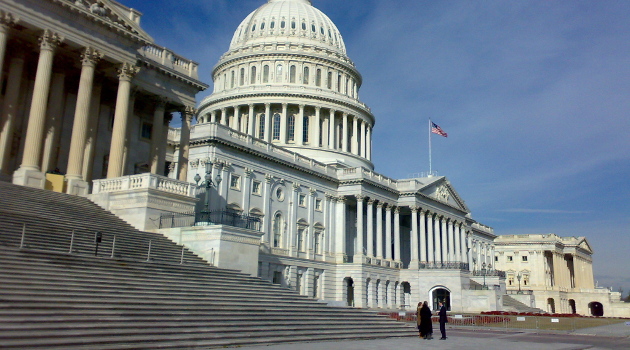The folks at USA Today invited me to opine on fiscal policy, specifically whether the 2017 tax cut was a mistake because of rising levels of red ink.
Here’s some of what I wrote on the topic, including the all-important point that deficits and debt are best understood as symptoms of the real problem of too much spending.
Now that there’s some much needed tax reform to boost American competitiveness, we’re supposed to suddenly believe that red ink is a national crisis. What’s ironic about all this pearl clutching is that the 2017 tax bill actually increases revenue beginning in 2027,
according to the Joint Committee on Taxation. …This isn’t to say that America’s fiscal house is in good shape, or that President Donald Trump should be immune from criticism. Indeed, the White House should be condemned for repeatedly busting the spending caps as part of bipartisan deals where Republicans get more defense spending, Democrats get more domestic spending and the American people get stuck with the bill. …The real lesson is that red ink is bad, but it’s only the symptom of the real problem of a federal budget that is too big and growing too fast.
I also pointed out that the only good solution for our fiscal problems is some sort of spending cap, similar to the successful systems in Hong Kong and Switzerland.
Heck, even left-leaning international bureaucracies such as the OECD and IMF have pointed out that spending caps are the only successful fiscal rule.
Now let’s look at a different perspective. USA Today also opined on the same topic (I was invited to provide a differing view). Here are excerpts from their editorial.
…more than anyone else, Laffer gave intellectual cover to the proposition that politicians can have their cake and eat it, too. …Laffer argued — on a cocktail napkin, according to economic lore,
and elsewhere — that tax reductions would pay for themselves. These “supply side” cuts would stimulate growth so much, revenue would rise even as tax rates declined. This is, of course, rubbish. In the wake of the massive 2017 tax cuts, …the budget deficit is projected to run a little shy of $1 trillion… To run such large deficits a decade into a record economy recovery, is a massive problem because they will soar to dangerous heights the next time a recession strikes.
I think the column misrepresents the Laffer Curve, but let’s set that issue aside for another day.
The editorial also goes overboard in describing the 2017 tax cut as “massive.” As I noted in my column, that legislation actually raises revenue starting in 2027.
That being said, the main shortcoming of the USA Today editorial is that it doesn’t acknowledge that America’s long-run fiscal challenge  (even for those who fixate on deficits and debt) is entirely driven by excessive spending growth.
(even for those who fixate on deficits and debt) is entirely driven by excessive spending growth.
Indeed, all you need to know is that nominal GDP is projected to grow by an average of about 4.0 percent annually over the next 30 years while the federal budget is projected to grow 5.2 percent per year.
This violates the Golden Rule of sensible fiscal policy.
And raising taxes almost certainly would make this bad outlook even worse since the economy would be weaker and politicians would jack up spending even further.
———
Image credit: Bjoertvedt | CC BY-SA 3.

